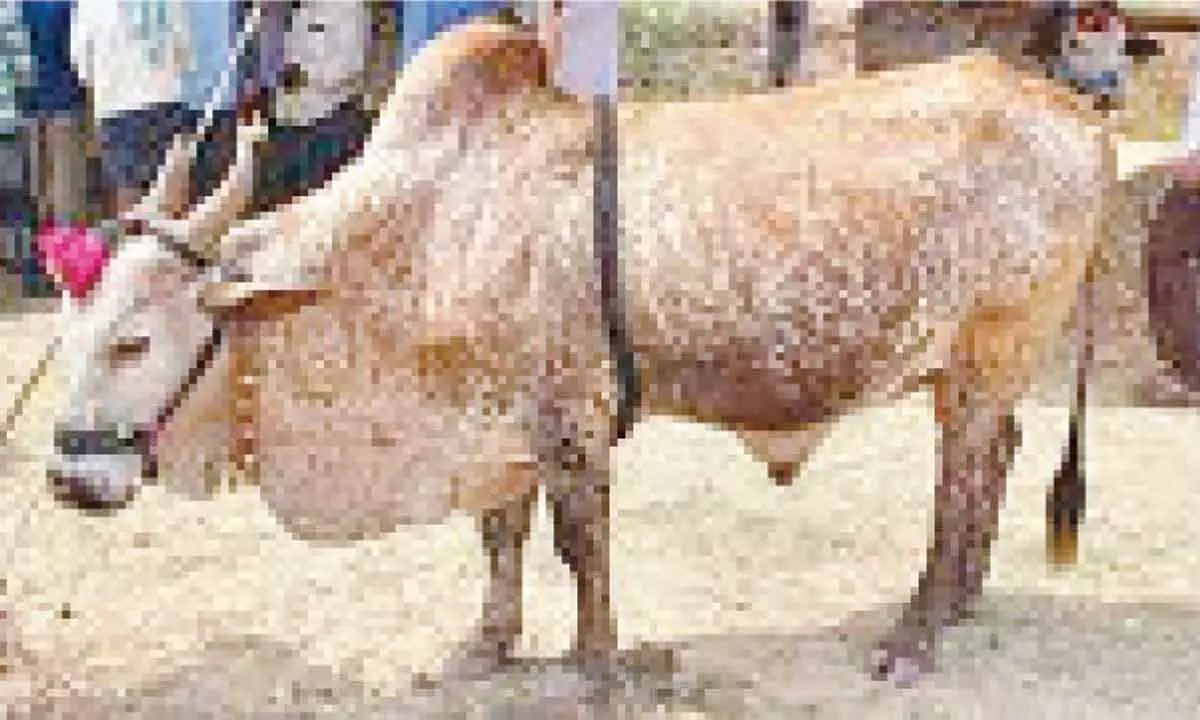Hyderabad: Clamour grows to protect endangered indigenous breeds

In a bid to enhance biodiversity and preserve the ecological balance, Telangana State has been actively implementing various measures.
Hyderabad : In a bid to enhance biodiversity and preserve the ecological balance, Telangana State has been actively implementing various measures. However, a concerning gap has emerged in the documentation of livestock, hindering the comprehensive understanding and management of this crucial aspect of biodiversity. The lack of proper records and documentation poses challenges for effective monitoring and conservation efforts, raising concerns about the State’s ability to sustainably protect and utilise its diverse livestock resources.
After the recognition of the cattle breed, ‘Poda Thurupu’, by the National Bureau of Animal Genetic Resources (NBAGR), Karnal in Haryana in January 2020, no measures have been taken to identify the indigenous cattle further. Poda Thurupu is mostly found in and around Amrabad in Nagarkurnool district.
Speaking to The Hans India, Sabyasachi Das, of Watershed Support Services and Activities Network (WASSAN), said, “Once the indigenous breed is identified, there is a requirement for public investment to conserve and sustain it.” We have made efforts to document another cattle breed ‘Vandhara’ and it is mostly found in Kamareddy, Nizamabad, and Rajanna-Sircilla districts of the State. There are an estimated 10,657 Vandhara cattle in the State, which are suited for agricultural operations. These animals are adapted to the local climate and perform better than cattle breeds of that area, he added. There are few other indigenous goats found in Kerameri village in Adilabad district and all these need to be documented by the government, says Sabyasachi.
A retired professor from PV Narasimha Rao Telangana Veterinary University said, “Efforts are not being made to conserve the indigenous livestock in the State. There are several indigenous livestock resources in the State which require immediate attention from the government to protect them. Telangana, being an agrarian State with rainfed ecosystem, there are several breeds spread across the region which include sheep in Achampet, buffaloes in Adilabad to Nagpur border, goats and sheep in Mahbubnagar known for prolificacy.” The diversified indigenous livestock must be studied, documented, characterized, and efforts must be made to register the breed, he added.
Speaking to The Hans India, Kanna Siripurapu, Senior Research Fellow, Saciwaters said, “Livestock biodiversity is being largely neglected, receiving insufficient attention in both mainstream media coverage and academic curriculum. The conservation of indigenous breeds is notably absent from the teachings in veterinary colleges, indicating a lack of focus on preserving these valuable genetic resources. Further, the animal husbandry department appears to disregard the significance of indigenous livestock, as they do not consider it within their jurisdiction. This disregard raises concerns about the future of these breeds, as many of them are currently facing the threat of extinction.”
Unfortunately, nearly 90 percent of India’s cattle breeds are under such perilous circumstances. Urgent action is required from the government to address this issue and implement measures for their protection. Without dedicated efforts, we run the risk of failing in our crucial mission to conserve these invaluable livestock breeds, he added.














